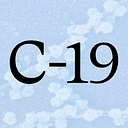The Case for Using Covid-19 Exposure Notification Apps
It isn’t too late for them to make a difference
Last week, I got a text from the New York State Department of Health inviting me to use the state’s contact tracing app. It was the first time I’d received an invitation, and my first thought was: After eight months of Covid-19, you’re asking me to use it now? Today, the case count in the U.S. reached 16.9 million, and over 307,000 Americans have died. Transmission is rampant in a majority of states. If an app notified me every time I had a close brush with someone who tested positive for Covid-19, would it even make a difference in helping stop the spread?
I asked Michael Reid, MD, MPH, who’s heading up the contact tracing programs for both San Francisco and California and is an assistant professor at the University of California, San Francisco specializing in infectious disease. The short answer is that it’s not known for sure whether these apps help reduce transmission in the U.S.: Not enough people have adopted them, so there’s not enough data.
The long answer, though, suggests they may still play an important role in reducing transmission of Covid-19, especially once the country is ready to fully emerge from shutdown.
Reid began his explanation by clarifying that these apps are for “exposure notification,” not for contact tracing per se. “They function to complement existing contact tracing capabilities,” he says. “That’s a useful distinction to make so that one understands that they’re not replacing the need for human contact tracing.”
Human contact tracers — which the U.S. is woefully lacking, notes Reid — identify people who test positive for Covid-19 and interview those people to find out who they’ve had close contact with. Those people are then notified about their exposure and given instructions for self-quarantining. This is a tried and true public health method for reducing transmission of infectious disease, and it’s proven to be a powerful tool for controlling Covid-19 in countries like South Korea, Vietnam, Japan, and Taiwan.
But the contact tracing process has a gap that apps may help fill. When a person who tests positive for Covid-19 is interviewed by a contact tracer, they identify people who they already know, like household members and close friends and family. They can’t, however, identify people they interacted with who they don’t know, like the salesperson at the grocery, or a teller at the bank.
While working as a contact tracer, says Reid, he learned that most people don’t know who they acquired Covid-19 from, and a substantial number of cases also elicit very few contacts. Exposure notification apps can alert people if they’ve been exposed to a stranger with Covid-19 and give them “the agency to take matters into their own hands,” he says, by self-quarantining and contacting their local public health department, which can use that information to track outbreaks. These Bluetooth-based apps allow phones to communicate with other phones that they come into contact with; if one user has logged a positive test result, the other will be notified.
For this reason, explains Reid, apps could actually have even more utility in a situation like the one we’re in today, where there is more widespread transmission of the coronavirus — assuming enough people use them. “If we’re ever going to go back to work or be on school campuses, or on factory floors, then these kinds of tools could be a real asset to be able to determine who you’ve come into close contact with who you might not otherwise known.”
The big caveat, he notes, is that the most important public health interventions are still social distancing and mask-wearing.
Whether enough people will use exposure notification apps remains to be seen. A recent Reuters analysis estimated that about 6 million Americans had used the apps by mid-November and that nearly 50% of the U.S. population would have access to one of these apps by Christmas. In April, a modeling study from the University of Oxford showed that 60% of the population needs to adopt these apps to end transmission. There are numerous reasons why people may not have downloaded the apps (Nature explains them in-depth here). Privacy is one common concern; in a OneZero story published in April, my colleague Will Oremus questioned whether these “opt-in” public health apps would be treated as such by private entities like churches and schools, and another colleague, Sarah Emerson, raised concerns that marginalized groups would bear the consequences of widespread surveillance.
Reid didn’t seem too worried about the privacy issue, though. “Ironically, I think that’s a really peculiar conversation to be having, given that Google and Apple and other technology companies are scraping your data all of the time for information that they’re going to use to target you for new products that you’re going to buy,” he says. “The mechanics of exposure notification technology is such that [the data] is not being centrally housed in some department of public health data warehouse.”
After talking to Reid, two things became clear to me: First, the country needs more human contact tracers and can’t expect apps to make much of a dent in transmission on their own. Second, I should probably just download the app. At the very least, there appears to be minimal cost and risk to me, and doing so would add another layer of protection to myself and the people in my household, plus support the work of the human contact tracers as they scramble to identify where the virus is headed next.
And, looking ahead, it may very well be a tool I’ll encounter again in the future. If exposure notification apps are shown to be effective, “I think they’re going to play an important role when the next pandemic comes around,” says Reid. “And chances are it’ll come around sooner than the last one.”

